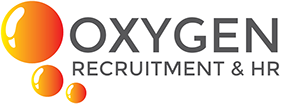Six ways to Structure your Resume to get Noticed
Regardless of your work experience and career length, the qulaity of your resume can impact whether you’re likely to land even just a phone call from a potential employer. Because of this, it’s important to structure your resume to stand out and capture the attention of Hiring Managers, showing off your skills, experience and work history in the best possible way.

Here are five steps to follow when structuring your resume to get noticed:
- Contact Information and Professional Summary
Start your resume with your essential contact details: your name, phone number, email address, the suburb you live in and LinkedIn profile at the top. Follow this with a concise professional summary (2–3 sentences). This is where you highlight your key strengths, relevant skills, and career goals. Tailor this to the specific role you’re applying for and demonstrate what makes you a strong candidate. Focus on skills or experiences that align with the job you’re applying for. - Core Skills and Competencies
In this section, list your key skills and competencies that match the job description. Use bullet points to highlight both technical and soft skills that are directly relevant to the role. This is also where you can include any certifications or technical skills that enhance your qualifications. - Professional Experience
Outline your work experience in reverse chronological order, starting with your most recent or current position. For each job, include the company name, location, your title, and dates of employment including months and years. Then, use bullet points to describe your key responsibilities and accomplishments. Focus on results and provide quantifiable metrics where possible. Use your current position description as a reference if needed. - Education & Certifications
List your academic background, starting with the most advanced qualification. Include the name of the institution, degree earned, and date of graduation. If you have any certifications or other industry-relevant credentials, mention them here. You can also add relevant coursework or academic Honors. - Volunteer Work & Additional Information
If applicable, include volunteer work, languages spoken, and any other extracurricular activities or interests that might be relevant to the role. This section can also highlight community engagement or industry involvement, which can help demonstrate your well-rounded character and leadership potential. - IT / Systems
In this section, write about specific technical skills, tools, and systems you have experience with, such as software development, network administration, or database management. Highlight key achievements, like improving system efficiency, reducing downtime, or implementing security measures. Tailor your language to the job description, showcasing your expertise in relevant technologies.

This structured approach ensures your resume is clear, targeted, and full of relevant information that hiring managers or recruiters can quickly scan and assess to see if you’re the right fit for the role.
If you would like feedback on your current resume, contact the Oxygen Recruitment & HR team today.
